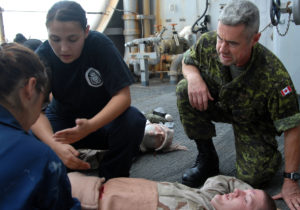Canada’s Medical Assistance in Dying (MAiD) program has been increasing in scope and popularity at a rapid clip. While not the first nation to legalize medically assisted suicide, Canada’s application of the practice has quickly become the most liberal – and exploratory – in the world. Recent developments around the program, including both policy proposals and shameful tales of its application, have sparked backlash from those who say the expansion is pushing the limits of ethically acceptable practices. Ultimately, however, there can be no substantive guardrails against MAiD’s expansion because the logic of physician-assisted suicide is intrinsically devaluing to human life.
Canada’s MAiD program was introduced just under a decade ago in 2016. Its initial eligibility criteria naively sought to avoid the mistakes of its predecessors, such as the infamous medical euthanasia programs of countries like the Netherlands, by restricting eligibility to only the terminally ill. This original legislation required that not only terminal illness, or “reasonably foreseeable natural death,” but also incurable illness, an “advanced state of irreversible decline,” and intolerable, enduring suffering. The legislation further included a number of provisions with the aim of promoting informed consent and to allow the patient the ability to withdraw consent at any time.
This initial vision, intended as a niche carve-out for extreme medical cases has, in just a few short years, quickly evolved into a central pillar of Canada’s healthcare system: it now accounts for 4.1% of deaths in Canada. This popularity, now seeing a steady 30% growth rate year over year, is due to the fact that the initial guardrails around citizens’ eligibility for medical euthanasia have rapidly begun to crumble. As a result of new legislation passed in 2021, a citizen need no longer be terminally ill to qualify for MAiD, opening up eligibility to those with non-deadly illnesses and disabilities.
While the program does still require that the nature of a person’s suffering be medical, the blurring of lines between medical suffering and poverty mean that many of those who choose MAiD are doing so for chiefly material rather than medical reasons. While inadequate housing is not officially a qualifying condition for euthanasia, several high-profile cases have involved exactly that. A disturbingly large portion of Canadians seem fine with this state of affairs, with a third saying they support euthanasia for the homeless, and a similar number agreeing with the availability of euthanasia for those whose “only affliction was poverty.”
These potential applications are more than a thought exercise or policy leakage, they’ve become drafted policy. Canada’s official MAiD policy was set to expand to those with mental health issues in March of 2024, allowing those with no underlying physical suffering to legally end their lives with the help of doctors. Due in part to pushback from external groups, officials have delayed this expansion until 2027, when it would then allow euthanasia for those with conditions like PTSD, anorexia, depression, and anxiety to end their lives. Opposition to the expansion has largely come from disability rights activists who say that Canada is already pressuring the disabled into euthanasia to ease an already strained socialized health system.
What many of these activists fail to recognize in their campaign for greater safeguards in MAiD is that the cost savings of MAiD are a feature, not a bug, of modern Canadian healthcare policy. Canada has already loudly cheered the millions saved in healthcare spending by euthanizing, rather than treating, Canadian patients, and is now similarly bragging about euthanasia’s ability to fill gaps in organ donations. Thanks to the non-terminal status of many MAiD recipients, euthanized Canadians now account for 6% of the country’s organ donations, a stat that some fear may actually incentivize euthanasia for those already looking for purpose to end their lives.
Some in Canada have even proposed following in the footsteps of Belgium and the Netherlands by expanding euthanasia to “mature minors” or even infants whose parents deem them unfit for life. Given Canada’s existing plans to expand MAiD to mental health issues, the potential for minors to qualify has many activists worried about impacts on an already fraught teen mental health landscape.
With their recent program expansion delays, policymakers in Canada seem intent on assuring the public that they have MAiD on a tight leash, but this control really only seeks to keep policy from outpacing public support. In fact, if there exists any rule for medical euthanasia programs, it’s that they all prove to be slippery slopes, as countries like Belgium and the Netherlands, which already allow euthanasia not only for mental health issues but also for infants and children, attest to.
What continues to evade both policymakers and many activists alike, however, is this: the slippery slope is not actually the problem. The issue with MAiD is not its policy design, loopholes, or even its doomed incentive structure within a socialized healthcare system, all issues on which current conversations around the practice seem to be stuck. The issue with MAiD is its premise. Medical euthanasia presumes a technocratic approach to medicine, where human beings are analogized to cogs in a machine rather than seen as made in the image of God. The inevitable results of MAiD will be ever more ubiquitous violations of human dignity and an accelerating disregard for humanity that policy safeguards might delay but can never reign in.






 Sponsor a student for Christianity & National Security 2024
Sponsor a student for Christianity & National Security 2024